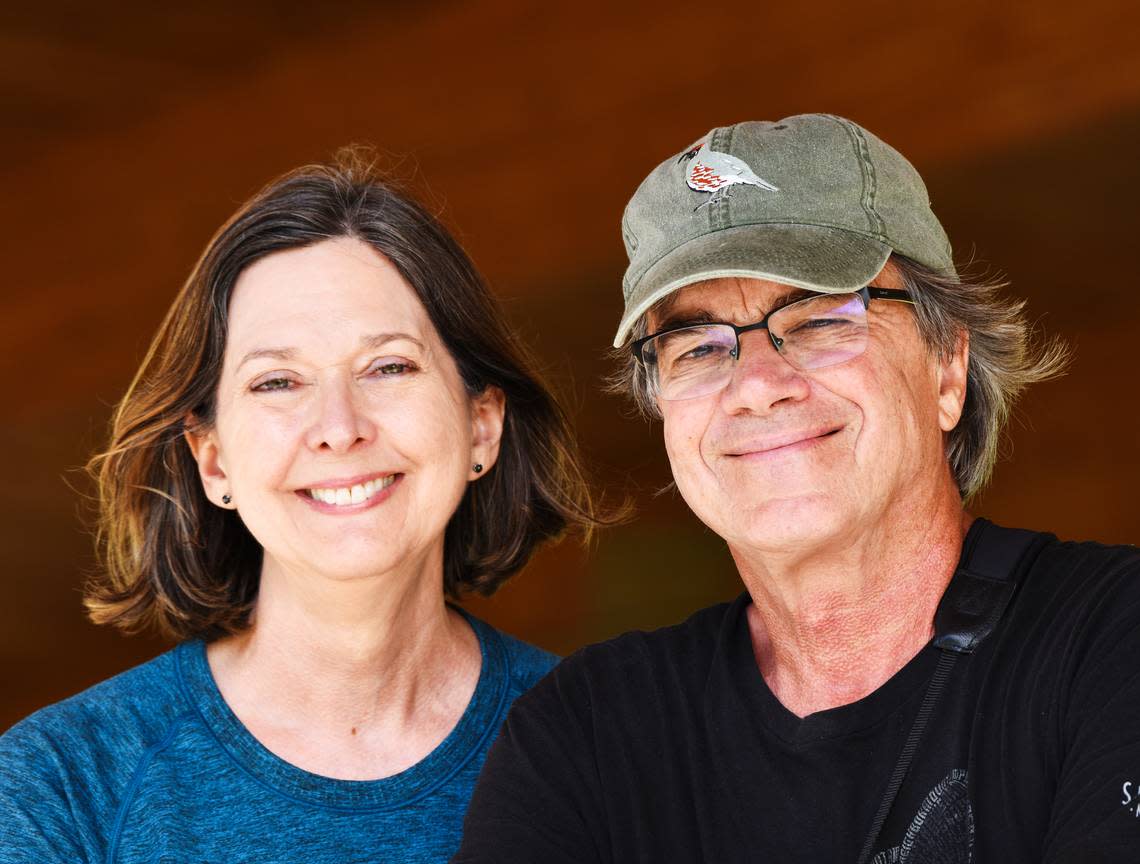It’s a fragile time for birds, but anyone with a smartphone can help
The U.S. Fish and Wildlife Service ran into a problem when it came time to count bald eagles just as the agency’s planes were grounded for repairs two years ago. So it tried something new, tapping into a citizen science network of birdwatchers.
The experiment was a rousing success. The birders network had a vast storehouse of data on where eagles live and breed, based on the listings of some 180,000 people across the U.S. The survey showed a big jump in the nation’s eagle population. It also showed the important contribution average people can make in a field long limited to scientists and wildlife officers.
We spent the last two years traveling 25,000 miles researching a book on bird conservation during a fragile time: Nearly a third of North America’s bird population has evaporated over the past 50 years due to habitat loss, urban hazards and climate change. Half of all species are now in decline.

We got a close-up look at the many promising missions that counter these pressures. Researchers are creating ever-smaller technologies to track migrations. They’re using sound recordings and artificial intelligence to analyze where birds get into trouble. Advances in genomics even raise the prospect of bringing extinct species back to life.
However, among the most intriguing developments we found is the outsized role anyone can play in one of the environmental challenges of our times, simply while walking in the woods armed with a smartphone. These contributions are turning out to be a significant part of the modern study of birds, capable of shaping policies and guiding research.
The eagle count is a good example of how this works. The citizen science project, started two decades ago by the Cornell Lab of Ornithology and the Audubon Society, has grown to include 700,000 people around the world. Birders record the species they see and hear on a free app called eBird, which the Cornell lab turns into precise maps of where the birds are and how they move around the globe.
The bald eagle is an especially popular target for birders with its stark white head, 7-foot wingspan and soaring flights. Since nearly going extinct from pesticides in the mid 1900s, the eagle has made a resounding comeback. That latest census found more than 300,000 birds have spread to every state on the continent.
The next decade or so will be a pivotal time. Plenty is at stake in trying to halt these declines since birds play a central role in the health of the environment: They’re nature’s workhorses, spreading seeds, pollinating thousands of plants, eating insects by the tons, fertilizing the land and seas, and providing the daily soundtrack of the outdoors.
One of the most successful conservation campaigns got its start in eastern North Carolina in Currituck Sound, where a group of hunters figured out how to combat the collapse of ducks and geese in the 1930s. We tell the story of how they worked to restore breeding grounds, provide migratory habitat and set hunting limits to create what grew into a national conservation campaign that should be a model for all bird species.
On the opposite end of the state, a nonprofit called Revive & Restore has hatched plans to bring the long-extinct passenger pigeon back to life. Based in Brevard, the leading scientist is working under a multi-million-dollar gift to restore what was once among the most abundant species in the U.S. The research is showing how editing their genes may help birds withstand environmental pressures, diseases, even shifting climates.
These and dozens of other projects are dependent on scientists, wildlife agencies and university researchers. But today, average people can play roles never possible before, by supporting conservation, creating bird-friendly yards and businesses, and now by signing up to join hundreds of thousands of people contributing by simply watching birds.
Anders and Beverly Gyllenhaal talk about their new book , “A Wing and a Prayer: The Race to Save our Vanishing Birds,” at 7 p.m. May 10 at Raleigh’s Quail Ridge Books.
